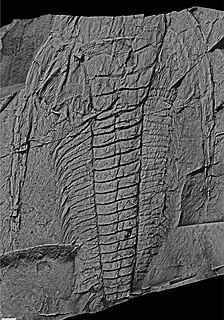
John William Salter was an English naturalist, geologist, and palaeontologist.

Hakea is a genus of about 150 species of plants in the Family Proteaceae, endemic to Australia. They are shrubs or small trees with leaves that are sometimes flat, otherwise circular in cross section in which case they are sometimes divided. The flowers are usually arranged in groups in leaf axils and resemble those of other genera, especially Grevillea. Hakeas have woody fruit which distinguishes them from grevilleas which have non-woody fruit which release the seeds as they mature. Hakeas are found in every state of Australia with the highest species diversity being found in the south west of Western Australia.

Tenix is a privately owned Australian company involved in a range of infrastructure maintenance and engineering products and services to the utility, transport, mining and industrial sectors in Australia, New Zealand, the Pacific Islands, and the United States.
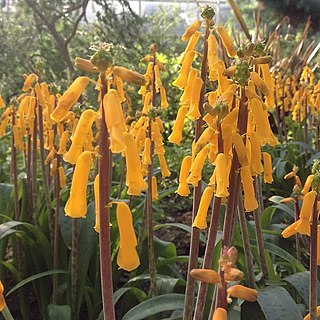
Lachenalia is a genus of bulbous perennial plants in the family Asparagaceae, subfamily Scilloideae, which are usually found in Namibia and South Africa. Most of them have a dormancy period, but new roots will always grow every year.
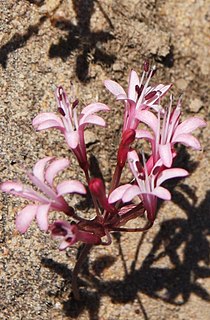
Strumaria is a genus of African plants in Amaryllis family, subfamily Amaryllidoideae. The genus is known in nature only from South Africa, Lesotho and Namibia. Almost all species flower in the autumn and are cultivated as ornamental bulbous plants.

Hessea is a genus of bulb-forming plants in the Amaryllis family native to Namibia and South Africa. The genus name commemorates C. H. F. Hesse (1772–1832), who resided in Cape Town from 1800 to 1817.
Strumaria unguiculata is a plant species endemic to Western Cape Province in South Africa.

Amaryllideae are a tribe of subfamily Amaryllidoideae. They are herbaceous monocot perennial flowering plants with a predominantly Southern African distribution, with the exception of the pantropical genus Crinum. They are generally treated as consisting of four subtribes. In addition to Crinum, other genera include Amaryllis, Boophone and Strumaria.

Dierdré "Dee" Anne Snijman is a South African botanist and plant taxonomist who is notable for studying and writing extensively on bulbs. She has described over 120 species and has written comprehensive works on South African flora. She received the 1997 Herbert Medal from the International Bulb Society for her research on Amaryllis.
Strumaria spiralis is a species of flowering plant belonging to the family Amaryllidaceae.
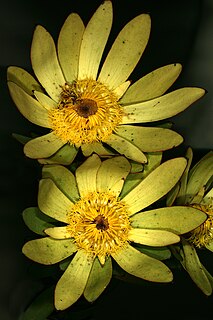
Leucadendron elimense, the Elim conebush, is a flower-bearing shrub, which belongs to the genus Leucadendron and forms part of the fynbos. The plant is native to the Western Cape, South Africa.
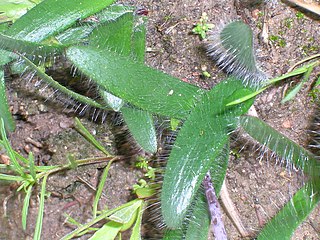
Strumaria chaplinii is a species of bulbous flowering plant in the family Amaryllidaceae, native to south-west Cape Provinces. It was first described in 1944 as Hessea chaplinii.
Strumaria discifera is a species of flowering plant in the family Amaryllidaceae, native to west and south-west Cape Provinces. It was first described in 1992.

Strumaria gemmata is a species of flowering plant in the family Amaryllidaceae, native to the Cape Provinces and the Free State of South Africa. It was first described by John Bellenden Ker Gawler in 1814.
Strumaria massoniella is a species of flowering plant in the family Amaryllidaceae, native to the Cape Provinces of South Africa. It was first described in 1985 as Gemmaria massoniella. Its bulb is solitary. Like other members of the genus Strumaria it has star-shaped flowers. In the Northern Cape Province, it is found in sandy plains at an elevation of about 1,000 m (3,300 ft).

Strumaria tenella is a species of flowering plant in the family Amaryllidaceae, native to Lesotho, and the Cape Provinces and Free State of South Africa. It was first described by Carl Linnaeus the Younger in 1782 as Crinum tenellum. Its inflorescence of white flowers has been described as "noticeably starry".

Strumaria truncata is a species of flowering plant in the family Amaryllidaceae, native to the Cape Provinces of South Africa. It is widely distributed in the northwest of the Cape Provinces, and the most common of the Strumaria species found there. It forms small clumps of bulbs which produce twisted leaves. Its flowers, which are pendulous, vary in colour from white to deep pink. The pink forms were once treated as a separate species, Strumaria rubella, and have also been called var. rubella. The species was first described by Nikolaus Joseph von Jacquin in 1792.

Strumaria watermeyeri is a species of flowering plant in the family Amaryllidaceae, native to the Cape Provinces of South Africa, where it is found in dry areas in the northwest. It is usually solitary, and has pink or white flowers. It was first described by Louisa Bolus in 1921.











